―
COP27 has finally come to an end
―
“An important step towards justice has been taken. We welcome the decision to establish and operate a future Loss-and-Damage fund.”
- UN Secretary-General Antonio Guterres -
https://news.un.org/en/story/2022/11/1130832
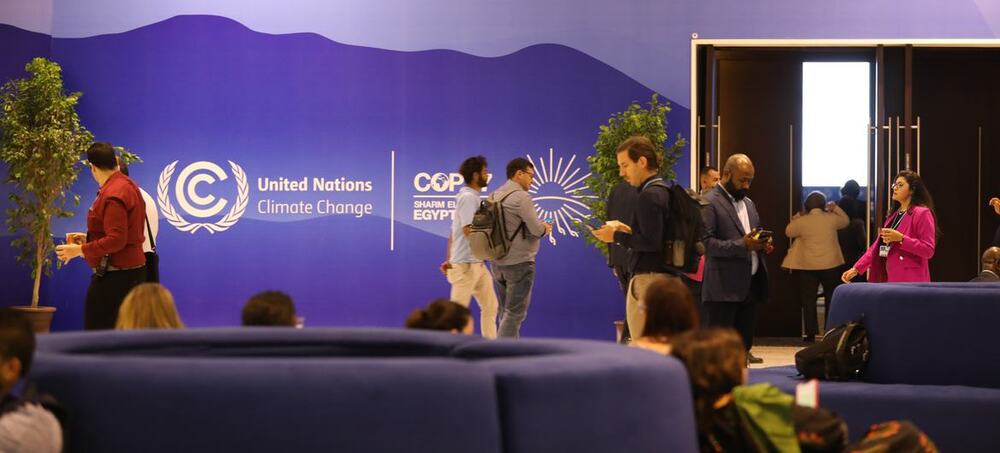
(Source: ©UN. https://news.un.org/en/story/2022/11/1130242)
The Conference of the Parties to the United Nations Convention on Climate Change (COP27) was held in Sharm El Sheikh, Egypt for 15 days from November 6 to 20 last year.
As we probably all know, the conference was originally scheduled to finish on the 18th, but it ended later than planned due to a contest of nerves between interested parties over the contents of the agreement.
What sort of content was it that caused the representatives of certain countries to suffer right to the end?
―
What is COP27?
―
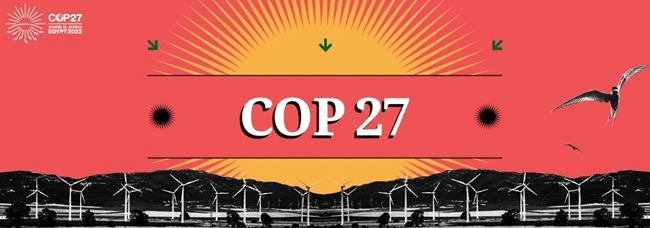
(Source : ©UN. https://www.un.org/en/climatechange/cop27)
But what does COP27 mean? Let's look at terminology first.
◎UNFCCC, United Nations Framework Convention on Climate Change
It is the United Nations Framework Convention on Climate Change. In 1992, it was formally signed at the United Nations Conference on Environment and Development in Rio, Brazil, so it is also called the Rio Environmental Convention. It was announced in March 1994 and currently 198 countries are parties to the Convention. States Parties must make efforts to reduce greenhouse gases and report their plans and results to the Commission.
◎ COP, Conference of the Parties
The Conference of the Parties is a meeting of countries that have signed the UN Framework Convention on Climate Change. It is held annually and is followed by a number according to the number of times it has been held. This year's Conference of the Contracting Parties, held in Egypt, is the twenty-seventh meeting and is called COP27. The first COP was held in Berlin, Germany in 1995.
Famous Conferences of the Parties
*COP3 : In 1997, the ‘Kyoto Protocol’, in which major countries agreed on greenhouse gas reduction targets, was signed.
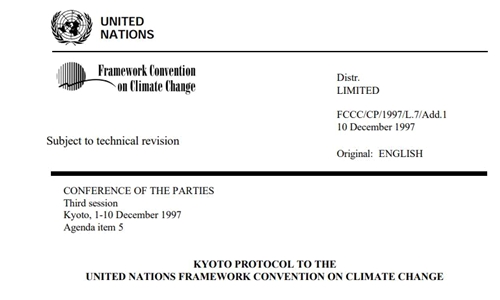
(Source : ©UNFCC. https://unfccc.int/sites/default/files/resource/docs/cop3/l07a01.pdf#page=24)
*COP15 : In 2009, the ‘Copenhagen Agreement’ was signed to limit the increase in global average temperature to within 2℃ of the level before industrialization.
*COP21 : The Paris Agreement was signed in 2015, replacing the Transport Protocol, which expired in 2020. It was decided to pursue efforts to limit the increase in global average temperature to within 1.5°C.
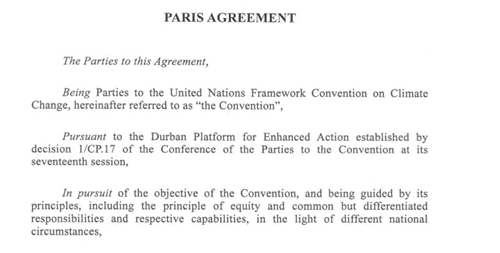
(Source : ©UNFCC. https://unfccc.int/sites/default/files/english_paris_agreement.pdf)
―
Issues addressed at COP27
―

What topics did we cover at COP27? Ahead of the General Assembly, many organizations and media introduced the main issues of COP27.
The World Economic Forum (WEF) introduced the following four goals set by the COP27 Presidency.
1. Mitigation : Calls on all parties, especially those in a position to “lead by example,” to take “bold and immediate action” and reduce emissions to limit global warming to less than 2°C
2. Adaptation : COP27 must make "Critically Necessary Progress" to strengthen climate change resilience and support the world's most vulnerable communities
3. Finance : Calls for significant progress on climate finance, including commitment of $100 billion annually to support developing countries
4. Collaboration : Since UN negotiations are consensus-based, reaching an agreement requires "inclusive and active participation of all stakeholders".
https://www.weforum.org/agenda/2022/10/cop27-why-it-matters-and-5-key-areas-for-action/
―
Loss and Damage
―
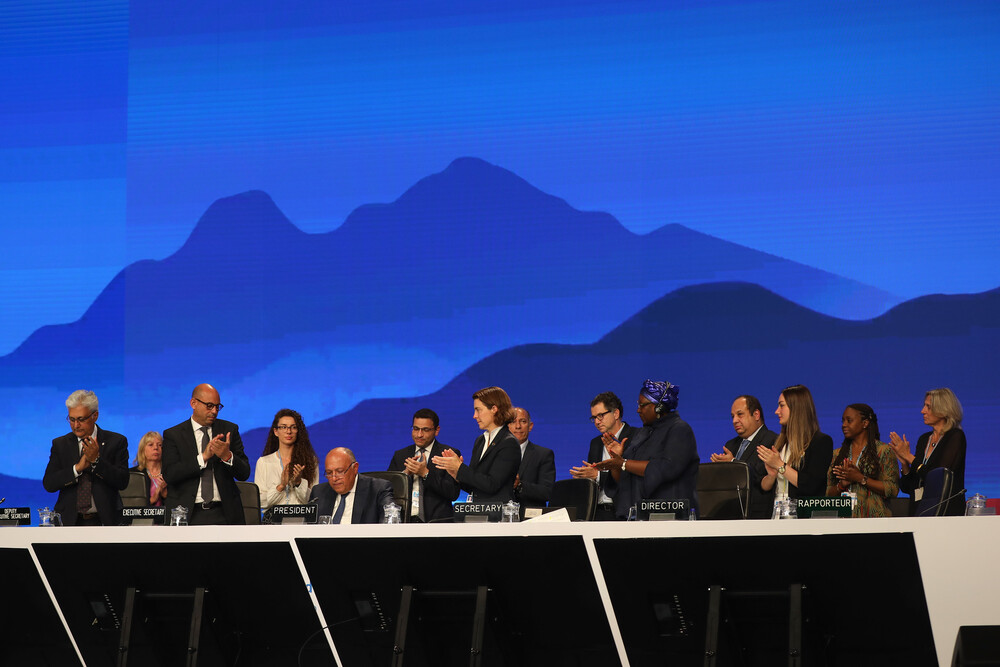
(Source : ©UN. https://unfccc.int/news/cop27-reaches-breakthrough-agreement-on-new-loss-and-damage-fund-for-vulnerable-countries)
However, there is one issue that received the most attention at this general assembly. This is none other than ‘Loss and Damage’.
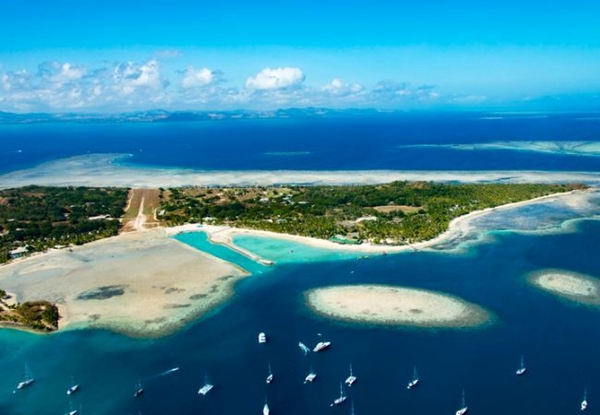
Demands for compensation for the damage inflicted by developed countries, which caused climate change in the course of development, have been around since the early 1990s, led by the small island nation (AOSIS) negotiating group, such as Tuvalu and Fiji. Even though “loss and damage” was also specified in the Paris Agreement in 2015, it did not become an agenda at the Conference of the Parties due to the passive attitude of advanced countries concerned about the enormous financial burden.
However, as the region where this general meeting was held is Africa, which is the most vulnerable to climate change, and it was adopted as an official agenda for the first time, it attracted great attention.
The issue of financing the ‘loss and damage’ subsidy has become the biggest issue between developed and developing countries to the extent that it was postponed until the end.
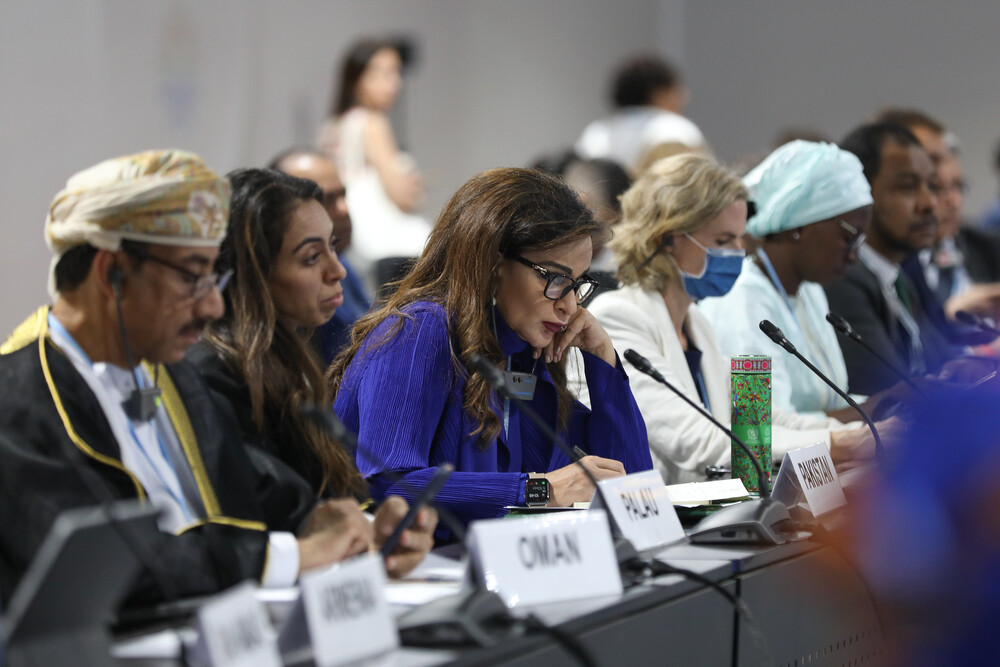
(Source : ©UN. https://www.un.org/en/climatechange/cop27/photos)
In particular, a group of 134 developing countries, including Pakistan, where a third of the country was submerged by floods this year, strongly demanded the establishment of a financial facility dedicated to responding to “loss and damage.”
Advanced countries preferred to utilize existing organizations such as the Green Climate Fund (GCF) rather than creating new organizations that would require enormous amounts of money and time.
After many twists and turns, it was agreed to establish a new financing system and fund to respond to losses and damages in countries most vulnerable to climate change. The response settled on here does not mean “compensation” that bears legal responsibility, but humanitarian “support.”
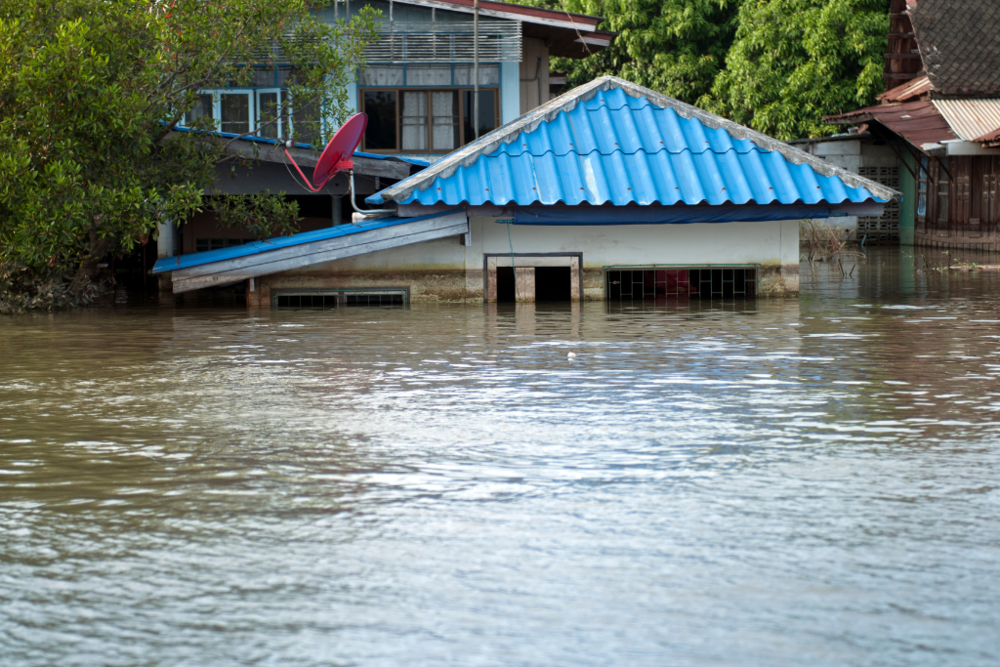
It is said that there was a temperature difference between the great powers here as well. The European Union took the position that China and India, the largest emitters of greenhouse gases, were not entitled to be beneficiaries of the fund, but rather ought to contribute to the fund. China fiercely resisted being treated as an advanced country at the climate talks.
https://www.nytimes.com/2022/11/19/climate/un-climate-damage-cop27.html
(Go to The New York Times related article)
―
Achievements and Limitations
―
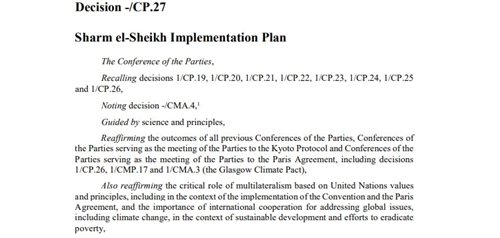
(Source : ©UNFCC. https://unfccc.int/documents/624444 (COP27 Agreement))
The United Nations evaluated this General Assembly as a historic agreement, but there are many voices of reluctance. The BBC summarized the results of this General Assembly in five points.
1. The commitment to jointly fund countries vulnerable to climate change is the most important development since the Paris Agreement of 2015 (COP21).
2. There is a retreat in the position on the use of fossil fuels. Gas emissions were supposed to peak before 2025, but that is missing from the agreement. The lack of clear follow-up on the phase-out of coal and the permitting of gas development under the phrase 'low-emission and renewable energy' is also an important loophole.
3. The will on the part of participating nations to keep the average temperature rise within 1.5°C was strong. In particular, developed nations and island nations showed deep solidarity with the 1.5°C curb, but China wanted a more relaxed target above 1.5°C. This became a major point of difference between developed nations and China. For reference, some nations, notably China and India, took the stance of easing the target to 2°C.
4. The presence and power of the fossil fuel industry was displayed. All the conference forums were attended by delegates involved in the oil and gas industry, and it felt like a fossil fuel trade fair; their influence was reflected in the final agreement.
5. It stressed the importance of democracy to the climate. This is the case of the recently elected Brazilian President Lula, and the BBC predicted that the United States will also hold to its 2030 carbon reduction target with the Democratic Party's victory in the Senate election. The general consensus likened the Bolsonaro regime in Brazil, faulted for devastating the Amazon, to the former US Trump administration, known as the “climate villain.”
https://www.bbc.com/news/science-environment-63693738
(Go to BBC article)
―
The ball is now handed over to COP28
―
Joint efforts to respond to the climate crisis are likely to pick up momentum at COP28 next year.
This is because, at this General Assembly, we managed to reach an agreement on raising a ‘damage and compensation’ fund, but the homework on how to raise the funds has been postponed till the next climate conference.
At COP28 next year, the States Parties decided to establish a transitional committee to make recommendations on new funding methods and fund management. Deciding the criteria for recipient countries and the scale of damages also remains an important agenda item.
Next year will also be the first year to review the performance of each nation in responding to the climate crisis since the 2015 Paris Agreement.
At this COP27, there was also discussion and progress in many areas not covered in this article, such as technology, food, carbon market, and water.
Even under the great goal of joint efforts to stave off global disaster, it seems that each nation shows both cooperation and confrontation based on interests, illustrating the harsh international reality.
It stands to reason we must seriously ponder how little time we have left for dragging our feet in taking action to stave off the impending climate catastrophe.
Written by Sharon Choi
Director of Planning
Sunhak Peace Prize Secretariat

